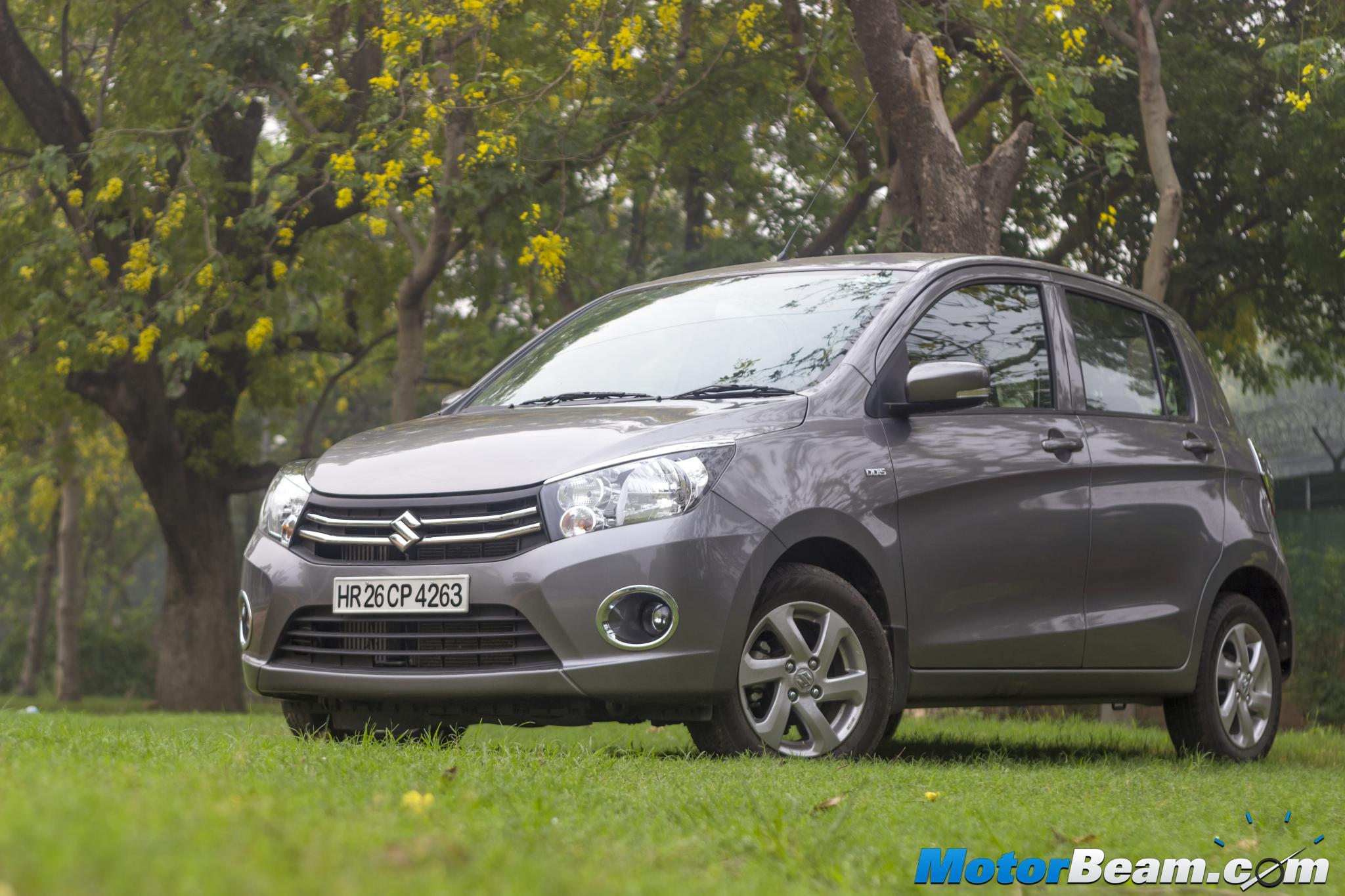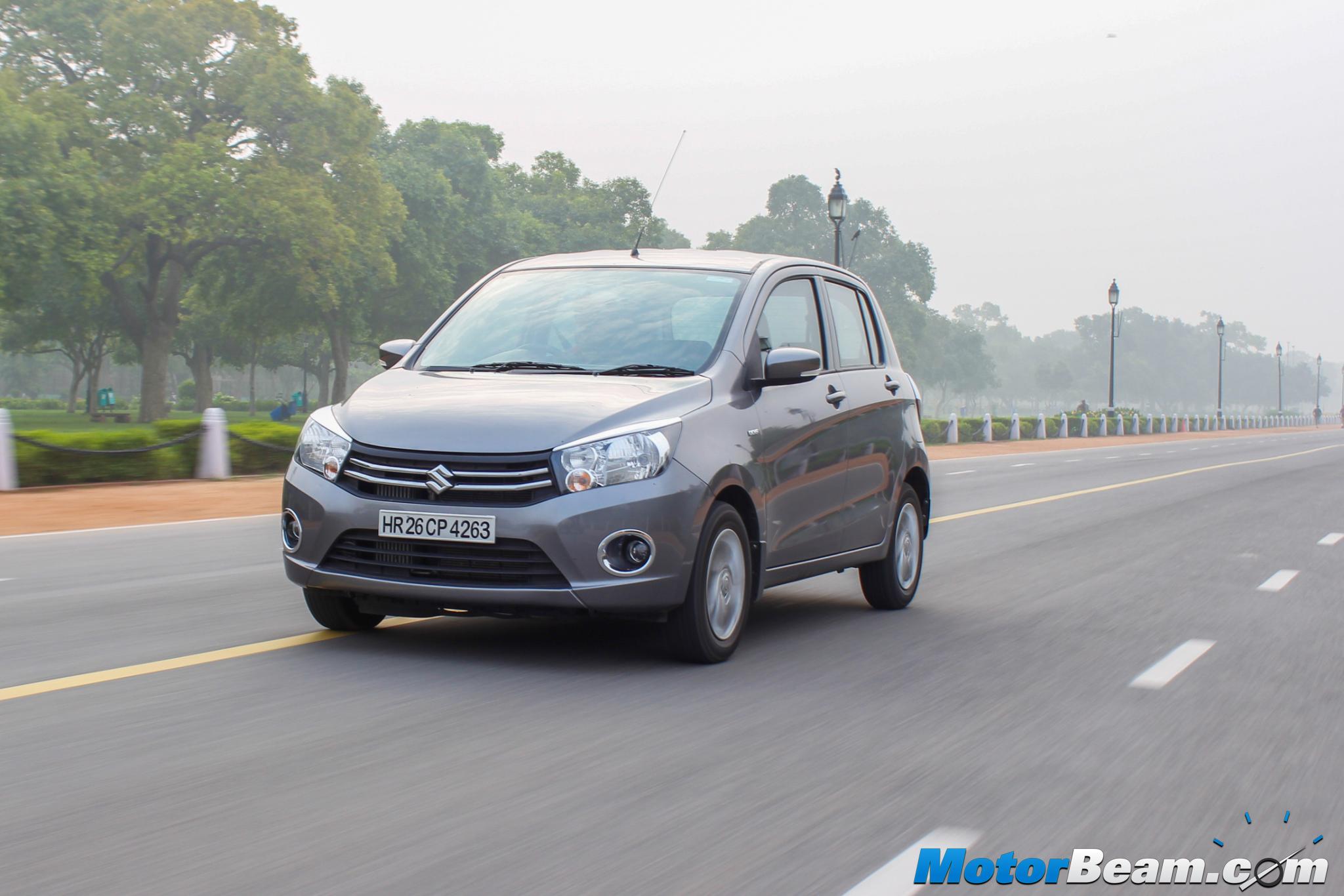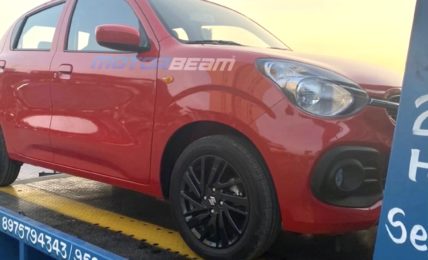
Maruti Celerio Diesel Review
Car Tested: 2015 Maruti Celerio Diesel DDiS 125
Price OTR Mumbai: Rs. 5.65 – 6.94 lakhs
The Celerio diesel is a peppy car to drive and is light on the pocket and high on practicality
Maruti Suzuki launched the Celerio last year in the country that became an instant hit with its AMT gearbox. The Celerio has been a crucial product for the Indian auto industry because it has transformed the perception of automatic cars amongst the Indian audience. Though it is not a fully automatic car, the basic concept of driving a clutch-less car in India has taken a big leap forward. About a third of the Celerios sold each month are AMT equipped. Now Maruti Suzuki has hit another milestone with the Celerio by introducing their first in-house diesel engine, which is also the smallest diesel motor in a production car in the world. We take the twin-cylinder oil burner for a spin and examine whether it’s a potent DDiS motor or not.
Motor Quest: Maruti Suzuki has invested more than Rs. 900 crores for the development of the DDiS 125 diesel engine, which gets 97 percent of localisation. With the launch of this engine in the Celerio, the carmaker has made some noticeable claims such as “India’s most fuel efficient car”, “First diesel engine designed and developed by Suzuki Motor Corporation” and “First car to offer super compact diesel engine option in India”.
The alloys look quite cool, notice the DDiS badge on the front fender
Exteriors – The Maruti Celerio has always been a decent looking hatchback that neither offends anyone nor does it make you say wow! It gets a neutral design language that runs in the Maruti family having a large headlamp cluster up front with twin slat chrome grille and a sizeable bumper integrating foglamps. The side profile reveals its tallboy stance while the strong creases adds to the presence of the Celerio. The 6-spoke alloys of the range topping variant look neat. The rear tends to look rather simple with its Alto inspired styling. This particular test car came with optional chrome kit which you can see on the headlamps, fog lamps and tail lamps. The diesel variants look exactly the same and have no changes apart from the DDiS badges on the front fenders.
The interior design looks pleasant & the audio system has extensive connectivity options
Interiors – There are no changes on the inside as well. The Celerio in its diesel guise comes with the same interior layout. The faux dark wood trims you see here on the centre console, gear lever housing and door pads come as an option like the chrome kit on the outside. The regular variants of the Celerio come with brushed silver trim instead. That said, the styling inside looks upmarket with the black and beige treatment, the latter being used extensively which gives the car an airy feeling. The Swift derived steering feels good to hold as always, instrument cluster is clear and easy to read having 6000 RPM mark redline in the diesel version, while the petrol has an 8000 RPM redline marking.
Rear seats have good legroom and headroom for tall passengers
The audio system of the Maruti Celerio is very well integrated in the centre console. It has AUX, USB, CD, Radio and Bluetooth connectivity that also gets steering mounted controls for calls and audio. The speakers sound okay but the Bluetooth is easy to connect and works really well. The interior quality, fit and finish is just average, there are many hard plastics and some controls like the circular AC vents and stalks feel flimsy to use. The cabin is quite comfortable to be in, ingress/egress is seamless, driving position is confidence inspiring, ergonomics are up to the mark and the space offered at the rear is quite ample too. 235 litres of boot space is impressive considering the Swift has only 206 litres. The lower trims miss out on a lot of equipment so if you want a loaded car, the Z variants is the only way to go.
The twin-pot motor judders a lot while cranking but feels well insulated from the inside
Performance – Now let’s get to the heart of the matter, the DDiS 125 twin-cylinder 793cc diesel engine. It makes 47.6 PS of power at 3500 RPM and 125 Nm of torque at 2000 RPM. It produces higher torque per cc of 0.16 Nm/cc than the 1248cc MultiJet in the Swift that produces 0.15 Nm/cc. The all-aluminium block makes it a light oil burner at 89 kgs. Crank the engine and the two cylinders come alive in a tad more time than you would expect generally. The vibrations are felt prominently inside the cabin while cranking and on the outside the diesel clatter sounds quite unpleasant (Tata Nano-esque). Shut the door and the ugly noise gets cut inside the cabin significantly thanks to the extensive use of sound deadening materials in the engine bay. Still the vibrations are apparent inside at idle engine speed (950 RPM), which gets slightly better when you switch on the AC and the RPM needle climbs a bit to 1000 RPM. When you get going, you don’t feel the vibrations and it’s relatively smooth and refined. So the NVH levels of the DDiS 125 aren’t well polished but considering it’s a 2-pot motor, we give a thumbs up to Suzuki for controlling the NVH to a great extent but it still has a big scope of improving further.

The DDiS 125 feels nimble and has a strong mid-range but lacks top-end
The drivability of this engine is fantastic in the city. Thanks to the compact turbocharger and fuel distribution system, there is just a wee bit of turbo lag, which will go unnoticed to most of the people. The car gains momentum quickly and starts accelerating from 1800 RPM that continues till about 3200 RPM strongly, post which the engine feels numb. There is a short band of torque and the engine revs quickly while it redlines at 4900 RPM. In order to get going, you have to shift gears early and you will see the speedo climbing effortlessly until you hit the three digit number. Yes, it struggles to climb post 100 km/hr and is not a highway mile muncher. The 5-speed manual gearbox is slick and easy to use and the diesel Celerio gets a hydraulic clutch, which feels light to operate and comfortable in stop-go traffic. It reaches 100 km/hr in third gear while at the same speed in top gear, the tachometer ticks at 3000 RPM, which is slightly high for a diesel engine. It’s just okay for cruising on the highways but you have to plan your overtaking carefully. Usually after cornering or while overtaking you downshift a couple of gears but in this case downshifting one gear is enough because it feels frozen at the top-end. However, within the city it feels quite peppy to drive and you would love the way it zips around the gaps while the bigger displacement diesels are waiting to shrug off the turbo lag.
The Celerio diesel is not meant for highways, doesn’t offer strong top-end performance
Usually at parking speeds or bumper-to-bumper traffic you can make do with releasing the clutch without touching the accelerator for creeping forward. Though with this engine you would want to build some revs and then release the clutch to move forward because otherwise the engine gets quite knocky and juddery. Now the big news is that the Celerio DDiS 125 is India’s most fuel efficient car that returns a claimed fuel efficiency of 27.62 km/l. To achieve those kind of figures, the carmaker has set a low compression ratio, installed a large intercooler and tuned the engine to produce higher torque at low RPM. To further enhance the fuel efficiency they have adopted low viscosity lubricants, high thermal efficiency and minimal friction.
The ride quality feels mature for a hatchback in this segment, stability is good as well
Driving Dynamics – The Celerio diesel weighs 900 kgs for the range topping variant compared to 830 kgs of the petrol version. The front end has been made stiffer and now feels more planted having good stability. The suspension is on the softer side and the ride quality is quite plush, specially at lower speeds. The high profile tyres keep the cabin comfortable on those patchy roads while only the big bumps and potholes tend to unsettle the car. At high speeds though the rear tends to bounce a bit. Handling is good and the Celerio diesel turns its face more confidently now and body roll is well controlled despite the tallboy design. The steering is light and easy to operate in congested areas but doesn’t weigh up as much as you would like at triple digit speeds. 165 mm of ground clearance and 4.7 metres of turning radius makes it a very practical hatch. Braking performance is brisk and makes you feel confident with the ideal pedal bite.
The proud Suzuki badge sitting on the grille ensures hassle free ownership
Safety and After Sales Service – Maruti is offering driver-side airbag as standard on the ZDi variant while the ZDi (Opt) variant comes with dual front airbags and ABS. The Celerio has been crash tested by Euro NCAP and it scored 3 stars, which is an average rating for a hatchback in this segment. As we all know Maruti Suzuki has the largest sales and service network in India and you can find one touchpoint easily anywhere you go. The vast presence of the carmaker offers great peace of mind to Indian car buyers.
It has enough features on the Z trim to make you feel comfortable amidst heavy traffic
Verdict – The DDiS badge until now was known for the great 1.3-litre MultiJet diesel engine sourced from Fiat by Maruti. The 1.3-litre mill offers great performance, is quite versatile, fuel efficient and highly refined. So do the new DDiS badges do justice on the front fenders of the Celerio? Well, on the refinement front it is decent for a twin-cylinder like I said but the overall NVH has big room for improvement. Having said that, the drivability is excellent for city commuting and high fuel efficiency figures will definitely be a boon for people travelling in peak office hours. The Celerio also offers an attractive package having ample features, comfortable cabin and is priced well too. All-in-all a great effort by Maruti Suzuki and an economical car to have.
Having a compact and highly efficient diesel engine under the hood, the Maruti Celerio is a very potent product in the Indian market for people on a tight budget, having high running. Suzuki is preparing bigger displacement diesel engines and it would be interesting to see the carmaker’s future with their latest development.
As is the case with all Marutis, the Celerio diesel is a good city car
What’s Cool
* The interior styling is fresh having well appointed colours
* The cabin is well insulated, spacious, practical and ergonomically sound
* DDiS 125 engine has superb city driving characteristics offering 27.62 km/l claimed efficiency
* The ride quality is good and stability at high speeds is confidence inspiring
* Lots of features on offer but only on the top spec ZDi trim
What’s Not So Cool
* The engine has a lot of vibrations at idle and sounds unpleasant on the outside
* Short band of torque and no top-end punch, restricted highway drivability
* Rear feels bouncy at high speeds, steering doesn’t offer ideal feedback
Alternatives: Hyundai Grand i10, Chevrolet Beat
In-house diesel engines will help lift the fortunes of Maruti Suzuki
Maruti Celerio Diesel Specifications
* Engine: 793cc, 2-cylinder, 8V
* Power: 47.6 PS @ 3500 RPM
* Torque: 125 Nm @ 2000 RPM
* Transmission: 5-speed manual
* 0-100 km/hr: 21 seconds (est)
* Fuel Consumption: 21 km/l
* Fuel Type: Diesel
* Suspension: McPherson Struts (Front), Torsion Beam (Rear)
* Tyres: 165/70/14
* Brakes: Ventilated Disc (Front), Drum (Rear), ABS
* Safety: ABS, dual airbags
Maruti Celerio Diesel Dimensions
* Overall length x width x height: 3600 mm X 1600 mm X 1560 mm
* Wheelbase: 2425 mm
* Boot Volume: 235 litres
* Fuel Tank Capacity: 35 litres
* Kerb Weight: 900 kgs
* Ground Clearance: 165 mm
* Turning Radius: 4.7 meters
Testers’ Note:
Pictures – Ram Yadav
Further Reading 0
Maruti Celerio Petrol Test Drive Review
Maruti Celerio vs Hyundai Grand i10



